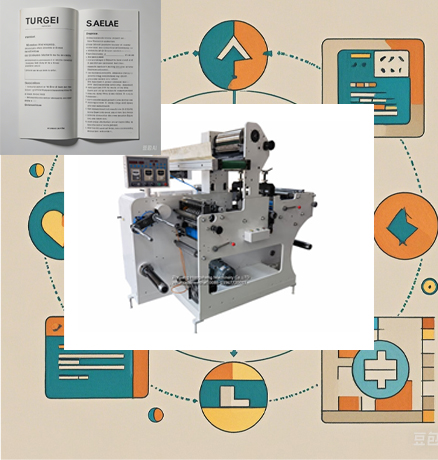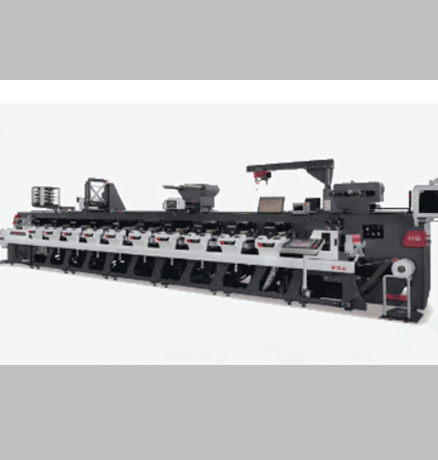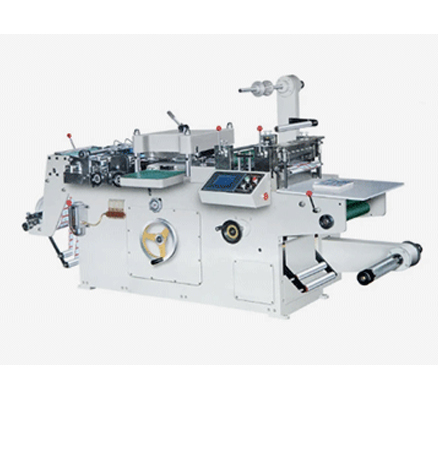In the modern packaging and printing realm, digital label die cutting machines emerge as essential tools. This article delves into their functions and operation. From precise digital control to flexible material handling, and a detailed usage guide, it aims to offer a comprehensive understanding, aiding professionals in leveraging these machines effectively.

I. Introduction
In the digital age, the Digital Label Die Cutting Machine has gradually gained prominence in the printing and packaging industries. It combines digital technology with die-cutting techniques and is of great significance for label production in various industries. Understanding its working principles, features, and operation methods can help practitioners improve production efficiency and optimize packaging.
II. Features
Digital Precision Control
With the help of advanced digital control systems, it can precisely set parameters for die-cutting, with an accuracy reaching ±0.1 millimeter or even higher. This is beneficial for the production of high-precision labels, enhancing the quality and aesthetics of the products.
High Flexibility
It supports various materials, such as paper, plastic films, and composite materials. Moreover, when faced with different shape designs, it can quickly switch tasks through software adjustments without the need to change dies, reducing preparation time and costs.
Efficient Production Capacity
It has a high operating speed and can die-cut thousands or even tens of thousands of labels per hour during large-scale production. It also has a high degree of automation, equipped with functions like automatic feeding, positioning, and waste removal, which improves efficiency, reduces costs, and labor intensity.
Seamless Integration with Design Software
It can be seamlessly integrated with mainstream graphic design software. Design files can be directly transferred to the control system of the die-cutting machine, ensuring that the design intentions are accurately realized and improving the overall efficiency and accuracy.
III. Operation Tutorials
Equipment Installation and Debugging
Choose a site that is flat, dry, and well-ventilated. The floor should be able to bear the weight of the machine, and there should be sufficient space around it for operation, maintenance, and storage of raw materials and finished products.
●Equipment Installation: Assemble the main machine, control cabinet, and other components according to the manufacturer's manual. Tightly connect each part to ensure a firm installation.
●Electrical Connection: Connect a stable power supply and data cables that meet the requirements of the equipment.
Debugging and Calibration: Start the equipment to check the operation of each component. Use calibration tools to calibrate the die-cutting parameters to meet the basic accuracy requirements.
●Material Preparation and Loading: Select appropriate materials according to the requirements of the labels, considering parameters such as thickness, width, etc. to ensure they are suitable for the equipment.
●Material Inspection: Before loading the materials, check their quality to see if there are any damages or defects. Ensure that the core size of the material roll matches the feeding device of the equipment.
●Material Loading: Load the materials onto the feeding device, control the tension, and adjust the tension adjustment mechanism to avoid material slackening or excessive pulling.
Parameter Setting and Job Preparation
●Graphic Import and Parameter Adjustment: Import the label graphic files into the control system of the die-cutting machine. Set parameters such as the shape, size, depth, cutting speed, etc. of the die-cutting according to the characteristics of the materials.
●Tool Selection and Installation: Select appropriate tools according to factors such as the shape of the labels and install them on the tool holder, ensuring that the direction and position of the cutting edge are correct.
●Job Testing: Conduct a test by die-cutting a small number of labels first and check whether the labels meet the design requirements. If there are any problems, adjust the parameters until satisfactory results are achieved.
●Production Start: After the test is completed and the pFormal Production and Quality Monitoringarameters are set correctly, officially start the production of the Digital Label Die Cutting Machine. Pay close attention to the operation of the equipment during the production process.
●Quality Monitoring: Regularly check the quality of the die-cut labels. Use measuring tools to measure the size and edge quality. If there are any quality problems, stop production immediately, find out the causes and make adjustments, such as replacing tools or recalibrating parameters.
●Production Record and Data Statistics: During the production process, keep good records and conduct data statistics, including the number of labels produced, production time, equipment operation parameters, and quality inspection results. Analyzing these data can help understand the operating efficiency of the equipment, the stability of production quality, and the consumption of materials, providing a basis for subsequent production management and optimization.
Equipment Maintenance and Care
●Daily Cleaning: After daily production, clean the surface of the equipment to remove debris such as dust, paper scraps, and ink, especially around the die-cutting area and the feeding and discharging devices. Tools like clean rags and vacuum cleaners can be used.
●Tool Maintenance: Regularly check the wear of the tools. If the cutting edge becomes dull or damaged, sharpen or replace the tools in time. Meanwhile, apply an appropriate amount of lubricant during the use of the tools to reduce friction between the tools and materials and extend their service life.
Mechanical Component Inspection and Maintenance: Check mechanical components such as motors, transmission belts, and gears. Check the normal operation of the motors, whether there is abnormal noise or overheating, and check the tightness of the transmission belts. If they are loose, adjust or replace them in time. Check the meshing of the gears to ensure smooth transmission. Add lubricating oil or grease regularly to keep these components in good working condition.
●Electrical System Inspection: Check the power supply lines and electrical components. If there are any problems, repair or replace them in time to ensure the electrical safety and normal operation of the equipment.
●Periodic Calibration: Calibrate the die-cutting parameters regularly according to the manufacturer's recommendations to ensure the stability of the equipment's accuracy and the quality of the produced labels.
IV. Conclusion
The Digital Label Die Cutting Machine has excellent features. By following the operation tutorials to operate and manage it, the efficiency and economic benefits of label production can be improved. In the future, with the continuous development of technology, it is expected to be further optimized, bringing more opportunities and changes to the label printing and packaging industries.



GET A QUOTE